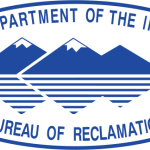- Settore: Government
- Number of terms: 15655
- Number of blossaries: 0
- Company Profile:
A U.S. Department of the Interior agency that oversees water resource management incuding the oversight and operation of numerous diversion, delivery, and storage projects the agency has built throughout the western United States for irrigation, water supply, and attendant hydroelectric power ...
A revolving fund for spill control efforts has been authorized in cases where the Federal government has taken over containment and cleanup operations. The fund is administered by the U.S. Coast Guard. Once the responsible party is determined, they are required to reimburse the fund for the oil removal costs.
Industry:Engineering
A prominent warning device, such as a tag and a means of attachment, which can be securely fastened to an energy isolating device in accordance with an established procedure, to indicate that the energy isolating device and the equipment being controlled may not be operated until the tagout device is removed.
Industry:Engineering
Process of removing surface or subsurface water from a soil or area. A technique to improve the productivity of some agricultural land by removing excess water from the soil; surface drainage is accomplished with open ditches; subsurface drainage uses porous conduits (drain tile) buried beneath the soil surface.
Industry:Engineering
A federally established network of commercial radio stations that voluntarily provide official emergency instructions or directions to the public during an emergency. Priorities for Emergency Broadcast System activation and use are first, Federal Government; second, local government; and third, State government.
Industry:Engineering
The acreage distribution of different crops in any one year in a given farm area such as a county, water agency, or farm. Thus, a change in a cropping pattern from one year to the next can occur by changing the relative acreage of existing crops, and/or by introducing new crops, and/or by cropping existing crops.
Industry:Engineering
Scientific study of water in nature: its properties, distribution, and behavior. The science that treats the occurrence, circulation properties, and distribution of the waters of the earth and their reaction to the environment. Science dealing with the properties, distribution and flow of water on or in the earth.
Industry:Engineering
A downstream hazard classification for dams in which 1-6 lives are in jeopardy and appreciable economic loss (rural area with notable agriculture, industry, or worksites, or outstanding natural resources) would occur as a result of failure of the dam. This classification also applies to structures other than dams.
Industry:Engineering
Any spill, authorized or unauthorized dumping, abandoned, or inactive waste disposal sites containing or suspected of containing hazardous materials. Materials may be in drums, cylinders, canisters, sacks, or may be uncontained in piles of solids, pools of liquids, abandoned tailings, ponds, or as clouds of gasses.
Industry:Engineering
The portion of precipitation, snow melt, or irrigation that flows over the soil, eventually making its way to surface water supplies. Liquid water that travels over the surface of the Earth, moving downward due to the law of gravity; runoff is one way in which water that falls as precipitation returns to the ocean.
Industry:Engineering
A downstream hazard classification for dams in which no lives are in jeopardy and minimal economic loss (undeveloped agriculture, occasional uninhabited structures, or minimal outstanding natural resources) would occur as a result of failure of the dam. This classification also applies to structures other than dams.
Industry:Engineering
